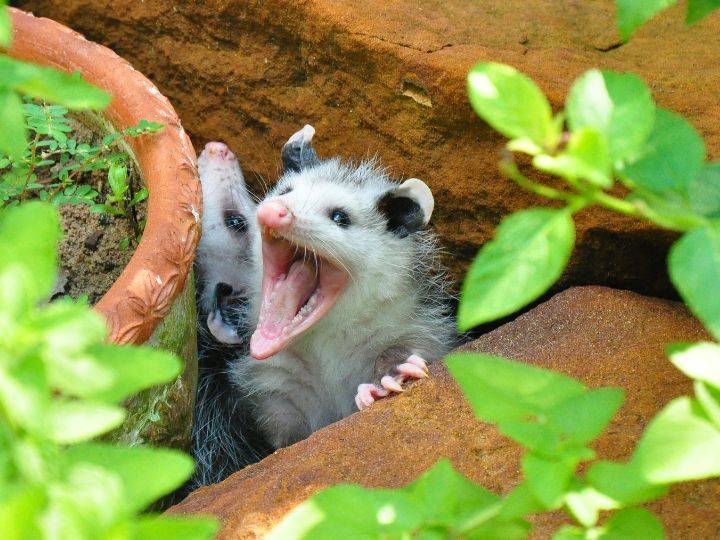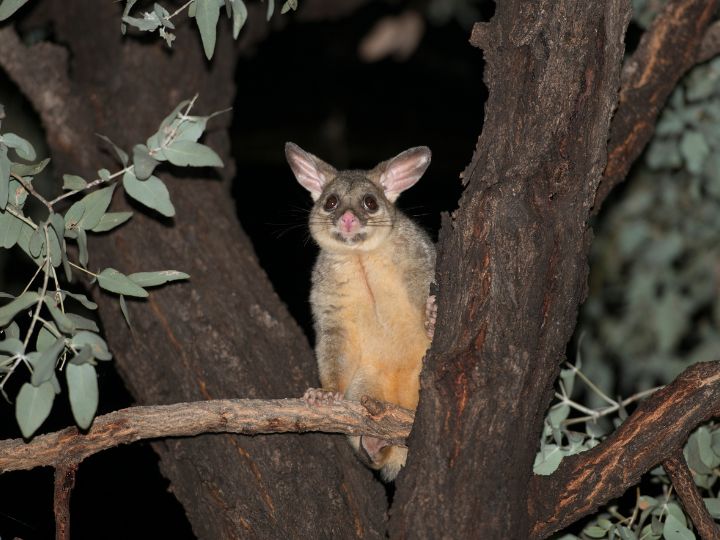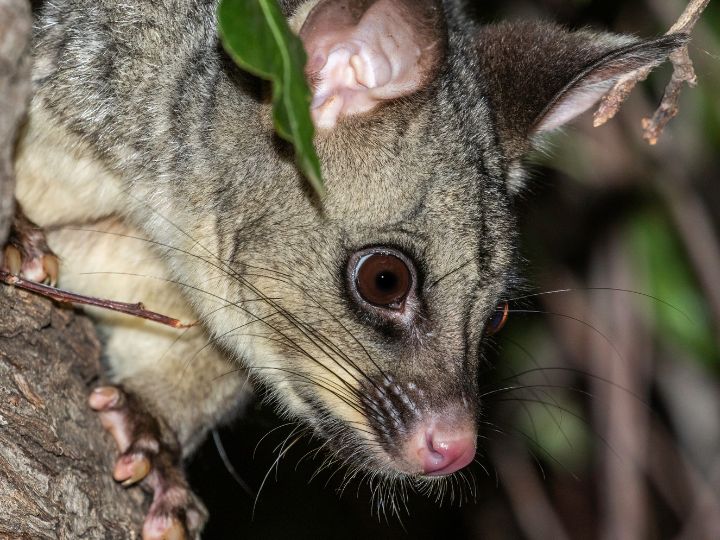Possums, or opossums, are notorious for their climbing skills, gaining access to trees and even rooftops with relative ease. As nocturnal creatures, they are often associated with scavenging for food in trash cans or vegetable gardens. However, one question that many people may have is whether these resourceful animals can also scale walls.
To answer this question, it’s crucial to understand the physical characteristics and behavior of possums. These marsupials have opposable thumbs on their hind feet and strong, prehensile tails that enable them to maneuver through various environments when searching for food or shelter. Their agile nature, combined with their specialized limbs and tails, allows them to successfully navigate multiple types of surfaces.
In cases of specific wall types, such as wooden fences or structures covered in vegetation, possums experience little trouble in traversing these obstacles. However, they may encounter difficulty when confronted with smooth, vertical surfaces, such as glass or concrete walls. Overall, the ability of possums to climb walls largely depends on the surface type and structure.
Possums and Their Climbing Skills
Physical Adaptations
Possums are well-adapted to climbing walls due to their unique physical features. One of their most important adaptations is their prehensile tail, which they use for balance and support. This tail allows them to grip branches and other objects securely, enabling them to climb with ease. Additionally, possums have sharp claws on their feet that help them maintain a firm grip on a variety of surfaces.
Their body shape is also beneficial for climbing. A possum’s body is lean and flexible, allowing them to maneuver in tight spaces and navigate complex environments. Overall, these physical attributes support possums’ ability to climb walls and other vertical surfaces effectively.
Behavioral Traits
In addition to their physical adaptations, possums display certain behavioral traits that contribute to their climbing skills. They are nocturnal animals, meaning they are active during the night. This behavior allows them to take advantage of quieter environments, making it easier for them to climb without disturbances.
Possums are also known for their curiosity and intelligence. They frequently explore new areas in search of food, shelter, or potential nesting places. This drive to explore their surroundings leads them to frequently climb walls, fences, and other structures. Moreover, possums show adaptability within different settings, allowing them to adjust their climbing methods based on the specific environment.
In summary, the climbing skills of possums can be attributed to both their physical adaptations and behavioral traits. With a combination of their prehensile tail, sharp claws, and inquisitive nature, they are well-equipped to navigate and climb walls.
Impact of Possums Climbing Walls
Effects on Property
Possums, being skilled climbers, can cause damage to properties. Their sharp claws and strong grip allow them to climb walls with ease. As they navigate the exterior of buildings, they may leave scratch marks and damage the surfaces they traverse.
Additionally, possums may enter homes and attics through openings near the rooflines. They can cause damage to insulation and wiring, as well as create a mess through their feces and urine. Homeowners should be cautious and secure any potential entry points to avoid such issues.
Interaction with Other Animals
Possums are known to interact with various other animals while climbing walls. As versatile climbers, they can access the nests of birds and other wildlife. This may lead to negative consequences for these species, as possums can consume eggs and small animals.
On the other hand, possums may deter some unwanted pests such as insects and rodents, as they serve as predators to these creatures. This can be considered a positive aspect of their interactions with other animals, providing indirect assistance to property owners.
In conclusion, possums climbing walls can impact both properties and the ecological balance of the area. Preventive measures can be taken to minimize property damage, and awareness of their interactions with other animals can help promote a more balanced ecosystem.

Image Credit: Canva.
Preventive Measures Against Wall Climbing
Possums are known for their climbing abilities, which can unfortunately lead them into unwanted spaces like attics and walls. To prevent possums from climbing walls, there are several measures that can be implemented.
Firstly, it is essential to trim branches which are in close proximity to the walls, since possums can use them as access points. By maintaining a clear gap of at least 5-6 feet, possums will be discouraged from attempting to climb walls.
Another method to prevent wall climbing is to install a possum guard. This can be done by attaching a sheet metal or slippery plastic material around the base of the wall. These materials will hinder the possum’s ability to gain traction, effectively deterring them from climbing.
Consider sealing all entry points along the walls and under the eaves to keep possums out of your home. This can be achieved by using a combination of wire mesh, caulk, and other building materials to close off gaps, cracks, and crevices.
Motion-activated sprinklers are another effective deterrent. These sprinklers can be strategically placed around the base of the walls to discourage possums from approaching. Once the motion sensor detects movement, it will spray water, leading to the possum leaving the area.
To further prevent possums from being attracted to the walls, focus on eliminating food sources. This includes securing garbage bins, removing pet food dishes from outdoor areas, and picking up fallen fruit from trees.
By incorporating these preventive measures, it is possible to significantly reduce the risk of possums climbing walls and infiltrating homes and other structures.
Conclusion
Possums are indeed capable of climbing walls. Their strong limbs, sharp claws, and prehensile tails give them the ability to scale vertical surfaces with relative ease. This climbing ability allows possums to explore urban environments and avoid a variety of predators.
In urban settings, possums can be found climbing walls and fences to access food sources and safe nesting spots. It is crucial for people living in possum-populated areas to understand this skill and take necessary precautions. Securing garbage cans, sealing possible entry points, and keeping trees trimmed can minimize unwanted encounters.
In summary, possums have evolved impressive climbing abilities that enable them to adapt well to both natural and man-made environments. Their skillful climbing should be considered when managing possum populations in residential areas to ensure a harmonious coexistence with these unique marsupials.
Frequently Asked Questions

Image Credit: Canva
Becky is a fervent wildlife enthusiast and pet care expert with a diploma in canine nutrition. Her love for animals stretches beyond the domestic, embracing the wild tapestry of global fauna. With over a decade of experience in animal welfare, Becky lends her expertise to OutlandishOwl through insightful articles, captivating wildlife information, and invaluable guidance on pet nutrition. Her work embodies a deep commitment to understanding the intricate lives of animals and a passion for educating others on sustaining natural habitats. Becky's hands-on conservation efforts and her knack for translating complex dietary science into practical pet feeding tips make her an indispensable voice for creatures great and small.




